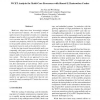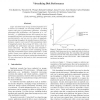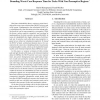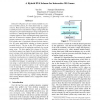126
Voted
RTAS
2008
IEEE
15 years 7 months ago
2008
IEEE
Message Sequence Charts (MSCs) are widely used for describing interaction scenarios between the components of a distributed system. Consequently, worst-case response time estimati...
124
Voted
RTAS
2008
IEEE
15 years 7 months ago
2008
IEEE
Dynamic Power Management (DPM) techniques are crucial in minimizing the overall energy consumption in real-time embedded systems. The timing constraints of real-time applications ...
101
Voted
RTAS
2008
IEEE
15 years 7 months ago
2008
IEEE
Multi-core chips have been increasingly adopted by microprocessor industry. For real-time systems to safely harness the potential of multi-core computing, designers must be able t...
RTAS
2008
IEEE
15 years 7 months ago
2008
IEEE
This paper tackles the problem of defining an appropriate access control model for multi-user systems providing adaptive resource reservations to unprivileged users. Security req...
89
Voted
RTAS
2008
IEEE
15 years 7 months ago
2008
IEEE
Large- and small-scale storage systems frequently serve a mixture of workloads, an increasing number of which require some form of performance guarantee. Providing guaranteed disk...
107
Voted
RTAS
2008
IEEE
15 years 7 months ago
2008
IEEE
In the domain of multiprocessor real-time systems, there has been a wealth of recent work on scheduling, but relatively little work on the equally-important topic of synchronizati...
118
Voted
RTAS
2008
IEEE
15 years 7 months ago
2008
IEEE
Real-time schedulability theory requires a priori knowledge of the worst-case execution time (WCET) of every task in the system. Fundamental to the calculation of WCET is a schedu...
RTAS
2008
IEEE
15 years 7 months ago
2008
IEEE
Interactive 3D games are now widely available on a variety of mobile devices for which battery-life is a major concern. Many of these devices support voltage/frequencyscalable pro...
103
click to vote
RTAS
2009
IEEE
15 years 7 months ago
2009
IEEE
QeDB is a database for data-intensive real-time applications running on flash memory-based embedded systems. Currently, databases for embedded systems are best effort, providing ...
109
click to vote
RTAS
2009
IEEE
15 years 7 months ago
2009
IEEE
Over the last few years, Real-Time Calculus has been used extensively to model and analyze embedded systems processing continuous data/event streams. Towards this, bounds on the a...




